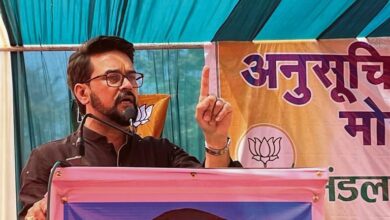Congress and BJP’s health sector manifestos are a wet squib
The Lok Sabha election manifestos from the Congress and the BJP have been made public. The Covid-19 outbreak, which is widely regarded as the biggest health catastrophe of the modern age, occurred during the just ended term of the 17th Lok Sabha. This alone ought to have resulted in the manifestos placing more of a focus on the health sector.

Furthermore, the 18th Lok Sabha’s tenure will span some of the most important years to ensure a much-needed advancement toward the achievement of the Sustainable Development Goals (SDGs). The two manifestos fall short in that they don’t place a compelling and cogent emphasis on health. They also exude a smell of surrender, indifference, and even simple contentment.
The Congress’ 2019 manifesto was notable for emphasizing public healthcare provisioning and a rights-based approach to health rather than going the health insurance way.
That being said, the party’s 2024 platform reinforces the widely held belief that the days of publicly funded healthcare are over. Rajasthan made a strong effort to implement the Right to Health, but the 2024 manifesto makes no mention of the possibility of comparable central legislation. Rather, a vacuous policy pledge to provide free healthcare to everyone has been made in the public sector. It is uninspired to increase the financial allotment for health from around 2 percent to 4 percent over the next four years.
This would be less than half of what is presently allocated for health in nations like China and Brazil, as well as less than what many really poor African nations and our neighbor Nepal do. The worst disappointment, however, is the party’s tacit acceptance of the insurance model of healthcare growth, which it has consistently supported since taking power in 2014.
The proposed universal healthcare scheme of the Congress is modeled around Rajasthan’s Chiranjeevi Yojana, which offers health insurance coverage of
Every qualifying household would get Rs 25 lakh annually. There is, however, no evidence that the program has had a major impact on recipients’ decisions about which providers to use or their ability to afford healthcare costs.
Regarding the BJP manifesto, it is essentially a self-congratulatory document that offers nothing in the way of innovation and aims to continue along the same route that it has previously taken in the health sector. It is important to note that the public healthcare industry has shown some encouraging indicators in recent years. The percentage of money paid out-of-pocket for healthcare has decreased as the government’s role in its supply has increased.
The BJP manifesto’s absence of significant and clearly stated commitments and ambitions for the health sector is concerning at a time when efforts toward the SDGs linked to health should be made at full speed. When it comes to the government’s premier public health insurance program, the Ayushman Bharat Yojana, this is especially unexpected.
The program exclusively makes expansionary pledges to qualifying transgender people and older seniors. The administration has often said in recent years that it intends to include the “missing middle” in the program’s coverage, in addition to the impoverished. The 2024 manifesto contains no such promises.
After a short period of seeming promise, it seems that health may once again take a backseat given the lofty aspirational promises made in the economic sector.
It’s interesting to note that the government was criticized in a recent editorial in The Lancet for seeming to lack sufficient health statistics and for being “afraid of showing the real state of health.”
What is the foundation of the current political agreement over public health insurance? Not very reliable data. There is no hard data demonstrating the efficacy of public health insurance programs, with the exception of a few commendatory policy studies and secondary assessments.
It seems destined to use the current, more complicated healthcare system’s 100% public sector provisioning model.
In actuality, however, policy momentum is determined more by political factors than by fact, which creates an environment that is conducive to misguided political rivalry. The best illustration of this can arguably be seen today, as political parties and states compete to raise the maximum amount of public health insurance coverage, which has increased from Rs 30,000 per year for the former Rashtriya Swasthya Bima Yojana to Rs 25 lakh for Rajasthan’s Chiranjeevi scheme in less than ten years. There’s rarely any evidence to support this.
Another hot subject is digital health, which once again has the incumbent party as its strongest advocate. The “why” of digital health in India has not received enough attention; at the moment, the movement is driven by concerns about efficiency, convenience, and a strong desire to be technologically advanced and competitive. Equity and financial protection have received very little attention.
It is imperative that its scope, limits, and cautions be realistically assessed, and the excitement around digitalization shouldn’t be allowed to overshadow the more fundamental problems besetting the health industry. We can only hope that a new age of political maturity about health is ushered in by the 18th Lok Sabha.







